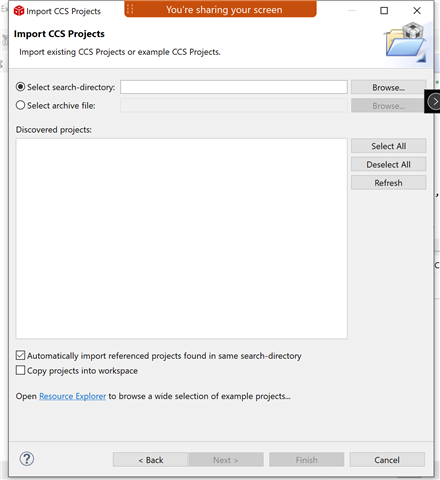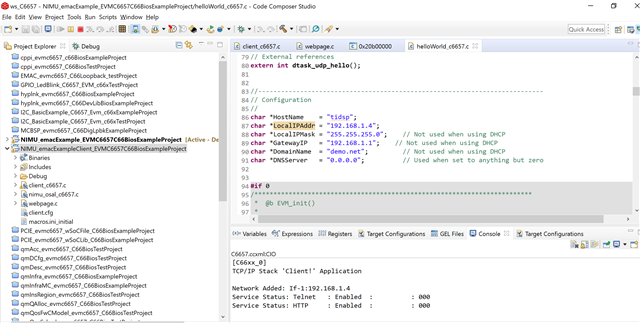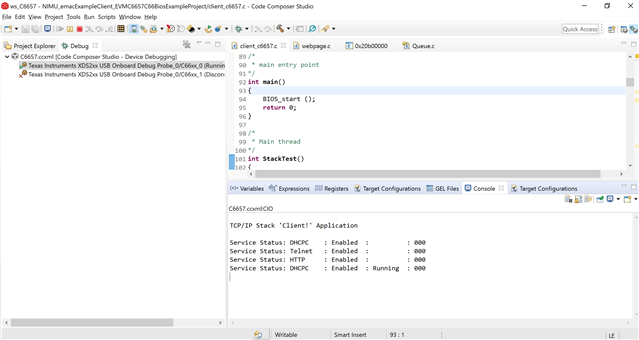Other Parts Discussed in Thread: CCSTUDIO
How to run NIMU EMAC example in TI-RTOS SDK?
This thread has been locked.
If you have a related question, please click the "Ask a related question" button in the top right corner. The newly created question will be automatically linked to this question.
How to run NIMU EMAC example in TI-RTOS SDK?
To run the NIMU EMAC example for C665x devices make sure the pre-requisites are present.
Now Import the CCS project into CCS and go on

// IP Configuration
//
char *HostName = "tidsp";
char *LocalIPAddr = "192.168.1.4";
char *LocalIPMask = "255.255.255.0"; // Not used when using DHCP
char *GatewayIP = "192.168.1.1"; // Not used when using DHCP
char *DomainName = "demo.net"; // Not used when using DHCP
char *DNSServer = "0.0.0.0"; // Used when set to anything but zero
...
/*
* Main thread
*/
int StackTest()
{
...
if(1) // set '1' for manual IP configuration
{
// Manual IP configuration
CI_IPNET NA;
CI_ROUTE RT;
...
}
else
{
//DHCP configuration
}
}int StackTest()
{
if(0) // set '0' for DHCP IP configuration
{
// Manual IP configuration
CI_IPNET NA;
CI_ROUTE RT;
...
}
else
{
//DHCP configuration
}
}


Thanks & Regards,
Rajarajan U